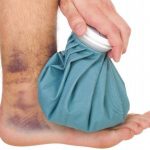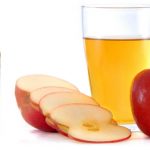Water retention, or edema, is a state that causes inflammation in the body, mainly in the feet, legs, hands, arms, face and around the abdominal cavity. In brutal cases, fluid can make up around the lungs, a situation known as pulmonary edema. Water retention occurs when water from the blood seep out into tissues in the body. The lymphatic system usually drains the fluid out of the tissues. When the lymphatic system is not working correctly, the fluid is not removed from the tissues. This results in inflammation of the tissues. It may also leads to stiff joints, weight change, a bloated feeling, and increased blood pressure and pulse rate. Read the article to know how to reduce water retention.
Contents
Tips to Reduce Water Retention:
1.) Limit Salt to Reduce Water Retention
Surplus salt intake is one of the main causes of water retention. Normally the body preserves a good balance of salt. Under normal condition, even if a meal is very high in salt, the kidneys make sure that any extra salt is removed from the body through urine output. In some people, the body does not have the capability to take away all of the surplus salt, and as a result water retention occurs. These individuals will benefit very much from lowering the amount of salt in the diet. Limiting salt means a lot more than just avoiding table salt. Many foods are made with salt. Processed foods often have large quantity of salt. Always read labels on packaged foods to check for high sodium levels.
2.) Yogurt to Reduce Water Retention
Yogurt is known among health professionals as a powerful probiotic that can help to abolish unhealthy bacteria from the digestive tract. Yogurt contains healthy bacteria. When consumed, these beneficial bacteria help to manage the unhealthy bacteria in the digestive tract, to create a healthy balance. When individuals eat too many sweets or rich foods, water retention can occur in the stomach, leading to bloating and gas. Eating a cup of plain, unsweetened, low-fat yogurt containing active, live cultures will help with digestion and flush out surplus water.
3.) Drink Lots of Fluids to Reduce Water Retention
Many persons suffering from water retention by mistake believe that they should cut back on their water intake. Conversely, those having water retention should boost the amount of water they drink on a daily basis. Consuming water helps to flush out toxins from the body, and along with them, surplus sodium. By drinking adequate amount of water, the kidneys are stimulated to emit more water in urine. This stops fluid from having the chance to build up in the tissues.
4.) Natural Herbs to Reduce Water Retention
Many herbs can have a natural diuretic result on the body. Certain herbs, such as dandelion and ginger, are supposed to help increase urination to wash out surplus water out of tissues and reduce water retention. Because some herbs can obstruct with medications, it is essential to speak with your physician prior to starting any herbal supplements.
5.) Ice Packs to Reduce Water Retention
Applying ice packs to the affected area can provide temporary relief to inflamed tissues. Even after steps have been taken to correct the original condition that lead to water retention, it can take weeks before inflammation decreases. In the meantime, topical treatment with ice packs can help alleviate swelling and the uneasiness it causes.
6.) Eat Foods High in Vitamins A and C to Reduce Water Retention
Foods that are high in vitamins A and C can help balance out fluid levels in the body. Sometimes, water retention occurs as a result of leaky capillaries that emit water into tissues. When this occurs, inflammation develops in the affected tissues. Foods that are high in vitamins A and C can strengthen capillary walls, which in turn lead to a drop in fluid leakage. When less fluid is leaked out of the capillaries, water retention is greatly reduced. Oranges and citrus fruits are known for having large quantity of Vitamin C. Other foods that are rich in vitamin C include bell peppers, broccoli, cauliflower, kale and other dark leafy greens, kiwi, strawberries and papaya.
7.) Wear Loose Cloth to Reduce Water Retention
Avoid wearing tight clothes that can worsen your condition. Force from tight-fitting clothing can further hold back fluid removal. Tight fitting clothes will cause additional inflammation in the lower legs. Wear loose-fitting clothes, which will not obstruct the blood circulation in the thigh veins. Loose clothes will make you comfortable and help you to exercise properly. Loose clothes will also don’t make you sweat unnecessarily.
8.) Exercise to Reduce Water Retention
Perform exercises that focus on muscles in the calves to perk up blood circulation and help take away surplus fluid build-up from the ankles. Simple exercises such as walking, jogging, running, riding a bicycle and doing aerobics will target these areas while also boosting overall circulation in the body. While doing other activities such as reading, surfing the Internet or watching television, raise your feet. Place a pillow below your feet if you are on the couch. This will help drain excess fluid away from the ankles.
9.) Potassium Rich Food to Reduce Water Retention
Potassium is an important nutrient that is necessary to the body. Potassium helps to control the fluids in the body and keeps electrolytes balanced. Electrolytes are important for preventing water retention because they uphold a proper water balance and ensure that water is dispersed evenly among tissues in the body. In addition, potassium helps to stimulate the kidneys to help them wash out waste, and along with it salt, out of the body. A Potassium shortage can lead to high blood pressure, irritability, feelings of stress and fatigue. Low levels of potassium can lead to water retention and weight gain.
10.) Epsom Salt to Reduce Water Retention
An Epsom salt bath can help you to reduce water retention and a bloated stomach through reverse osmosis. It draws out surplus fluids and toxins from your body. The relaxing bath also relaxes sore muscles and calms the nerves. Mix two cups of Epsom salt in warm bath water. Soak in it for about 15 minutes. Repeat up to three times a week.
11.) Dandelion to Reduce Water Retention
A recent study has proved that dandelion has shown diuretic effect. It makes dandelion a good way for removing surplus water from your body. It is a good source of potassium, that helps to lower the sodium levels in the body. It is also a rich source of magnesium, which is good for relieving pre-menstrual bloating.
- Soak dried dandelion herb two teaspoons in a glass of hot water for about 15 minutes.
- Pour while straining in other glass and drink this dandelion tea three to four times a day.
- You can also prepare dandelion supplements or tincture.
- The important point before taking dandelion tea is to consult your physician as it sometimes interfere with certain drugs.
12.) Fennel Seeds to Reduce Water Retention
Fennel works as a diuretic and increase the sodium amount in the body and helps to increase the water output from the kidneys. It also stops the formation of toxins in the body, and relieves gas.
- Add two teaspoons of fennel seeds in a glass of hot water.
- Let it soak in water for 5 minutes.
- Strain and drink this fennel tea two times in a day for a few days.
In addition to the above home remedies, try eating more foods which are diuretic like cucumbers, cabbage, celery, pineapple, melon and watermelon. Drink as much water you can throughout the day, drink less alcohol, limit salt intake and exercise regularly.











